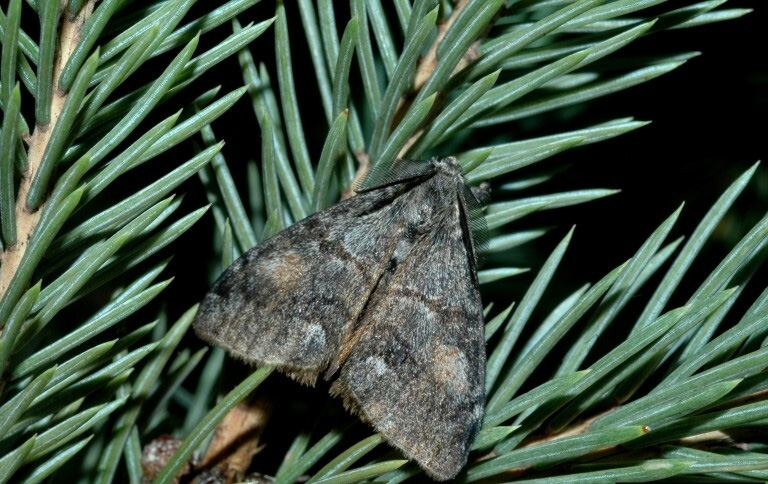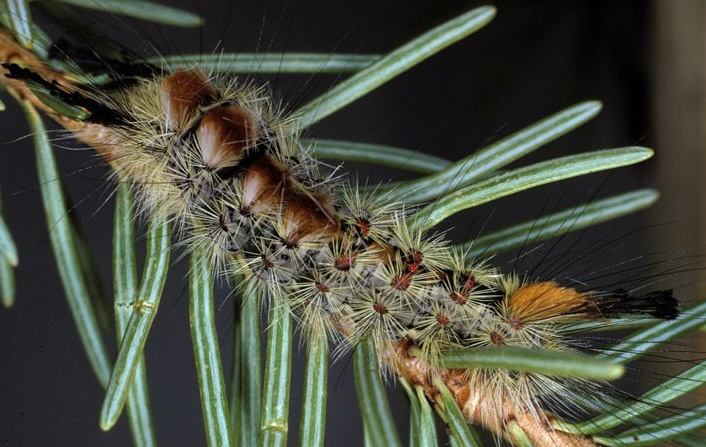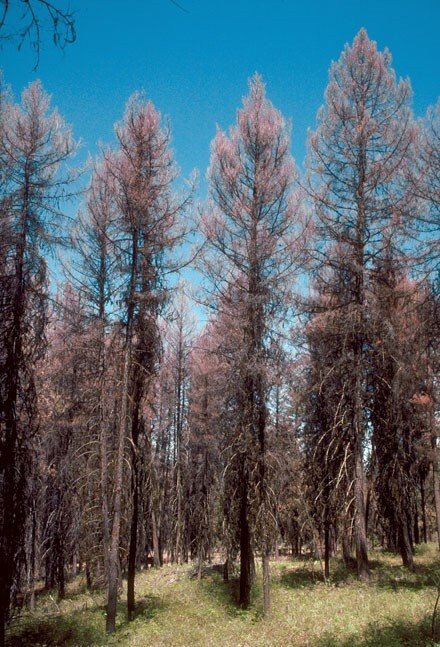Douglas-Fir Tussock Moth (Orgyia pseudotsugata)

Figure 1. Douglas-fir tussock moth. Photo by W. Ciesla, Bugwood.

Figure 2. Douglas-fir tussock moth caterpillar. Photo by USFS-Region 2, Bugwood. Larger image (135KB).

Figure 3. Douglas-fir tussock moth damage. Photo by D. Powell, USFS, Bugwood. Larger image (152KB).
Hosts
Douglas-fir, spruce, and fir trees.
Damage and Symptoms
Caterpillar feeding and defoliation typically starts on new, succulent foliage at the top of the tree and continues downward. Sometimes the defoliation can be severe, especially if occurring over repeated seasons. They may be found under webbing and silk harborages on the branches.
Life Cycle
They overwinter as egg masses on twigs and branches. The eggs hatch in the spring at bud break, often in late May, and caterpillars begin feeding on the new growth. They then move to feed on older needles. Adults emerge in late summer (late July through mid-August). There is one generation per year.
Management
A variety of predators and natural enemies normally keep populations down, including parasitic wasps, tachinid flies, spiders, and birds. If chemical control is necessary, contact insecticides are most effective during the early spring, when caterpillars are younger. Monitoring for caterpillars is critical for the proper timing of insecticide applications.
Further Information
To learn more about the topics discussed on this page, contact the Schutter Diagnostic Lab. If you suspect an infestation on your property, contact your local extension agent, the Schutter Diagnostic Lab at Montana State University, or the Montana Department of Agriculture.
This fact sheet is also available as a printable PDF (492KB).
Disclaimer: These recommendations are provided only as a guide. It is always the pesticide applicator’s responsibility, by law, to read and follow all current label directions for the specific pesticide being used. The authors and Montana State University assume no liability resulting from the use of these recommendations. The Montana State University Extension Service is an ADA/ EO/AA/Veteran’s Preference Employer and Provider of Educational Outreach.
